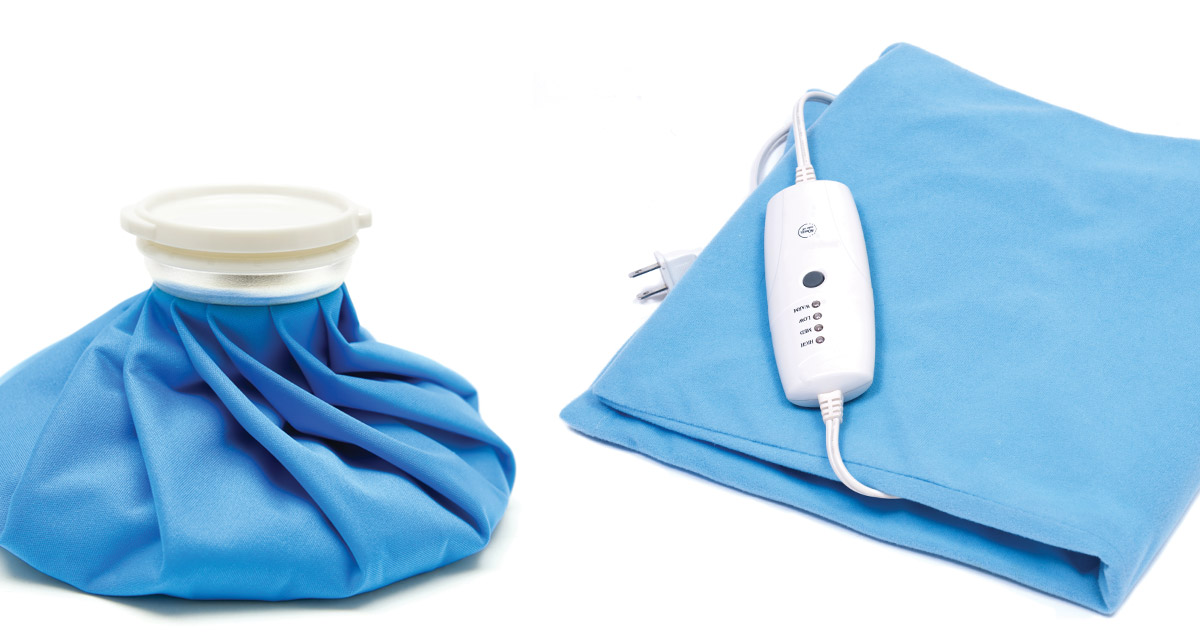Accidents occur just as quickly as swift action is required. As parents know, one of the simplest applications for the inflammation and swelling of a pulled muscle is an ice pack or a warm compress. The difficulty lies in knowing which situation calls for cold or hot, or a combination of both.
Cold
When injuries occur, the first action is to think of a numbing agent, which means a towel dampened with cold water or a cold compress. Cold will assist in relieving the pain by numbing the affected area, and potentially reducing swelling or inflammation, and bleeding.
Types of Applications
- Chilled Towel: After dampening a towel with cold water, place it in a sealable bag and allow it to chill in the freezer for a maximum of 15 minutes. It is always wise to place a cloth between the chilled “bag” and the skin.
- Cold Compress: There are a number of effective ways to create a cold compress, such as placing ice cubes into a plastic sealable bag or to chill water in a rubber container with a sealable lid. Do not fill the compress fully, only partially with ice or water. Additionally, remove the air before placing the container in the freezer for 15 minutes.
- Gel Packs: A useful type of reusable compress that remains in the freezer until needed and can be easily cleaned.
Warning: Cold applications should be removed after 20 minutes of use. Repercussions may result in skin, tissue, or possibly, nerve damage. There is a greater risk to those with poor circulation or who have a sensory disorder. The inability to feel cold temperature may result in a greater debilitation to the afflicted area. If cold therapy has not improved an injury or swelling within 48 hours, please, call your doctor.
Heat
As muscles can be made sore by intense exercise or overstretching, a muscle strain may occur in the lower back, neck, shoulder, or hamstring muscles. Pain and a limited extension of movement may require home treatment, beginning first with ice and continuing with heat. One warning that must always be remembered: Heat should not be used on any injury in the first 48 hours. Why? Heat is a therapy that works by improving circulation and blood flow to an afflicted area. Blood will rise to the surface later when heat is applied, and the results will aid in soothing joint stiffness and muscle spasms. Additionally, heat therapy can increase flexibility.
Types of Applications
Heat therapy is beneficial when it can be applied for medium to long periods of time. For instance, an application of up to 20 minutes of a warm damp towel to heating packs can ease minor stiffness or tension. Likewise, a longer session of warmth, such as a bath ranging from 30 minutes to two hours, will soothe moderate to severe pain.
- Warm Damp Towel: If using a towel, do not use scalding water. The water only needs to be warm. This application will help to relieve muscle spasms. Smaller areas would benefit from a towel.
- Heating Pad or Dry Heating Packs: Choose a low setting (warm) and apply a cloth in between the heating pad and skin to prevent the pad from direct contact with the skin. Heating pads are good for widespread pain or stiffness.
- Saunas or baths: Althoughsimilar to the warm towel, a sauna or bath is often more effective. One of the key incentives is an ideal temperature. “Warm” is preferable to “hot,” especially if pain is experienced on various areas on the body.
When Not to Use
If, at first appearance, the area appears bruised or swollen, heat therapy should not be applied, and especially if the wound is open. There is a higher risk to individuals who may be sensitive to burns or have pre-existing conditions, such as diabetes, deep vein thrombosis, hypertension, dermatitis, heart disease, multiple sclerosis (MS), or vascular diseases.
Through experience, you may quickly discover inflammations and swollen areas often respond to cold applications, while muscular pain is soothed by heat. Some situations, such as arthritis pain, seek heat for joint stiffness, and a cold compress to reduce swelling and numb acute pain. It is always important to take notice of pain and to contact a doctor if the skin alters in color or bruises develop. While treatment can often be applied at home, changes for the worse may require a more serious treatment option.




















